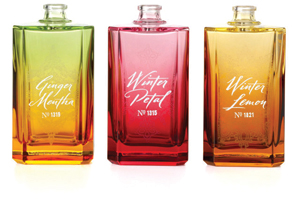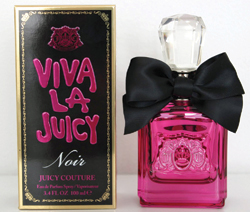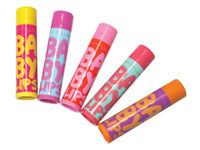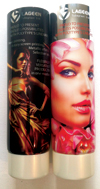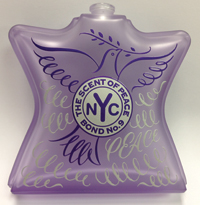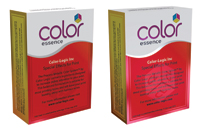
2014-01-06 17:03:12
Focused on the Details of Deco
2014-01-06 17:03:12
Decorative finishes such as embossing, etching and frosting can give added visual appeal to stock packages and componentry, and a luxurious flair to custom designs—and all of that proverbial lily gilding goes a long way toward helping a product stand out at retail.
Decorating packaging and componentry enhances the eye appeal of products, says Peter Philip of Saco Ltd., Danbury, CT. “Decorating a closure can make a stock cap unique, double the eye appeal, create flash, confirm an identity,” he said. “Decorating adds expense to a standard cost but also separates this product from all the others that are simply gold or silver.”
|
|
Decorative finishing is especially prevalent in the prestige fragrance market, where the trend dovetails with an increased complexity of decorating techniques on consolidated glass forms, explains Richard Engel, executive vice president, Decotech Inc., Englewood, NJ.
“By re-using the same bottle forms, clients are able to put more of their budgets toward the decoration of the product,” he says. “This year we were involved in the repackaging of an existing fragrance, using the same glass bottle but a totally different decoration. This item went from being one of the lowest performing items in the lineup to a ‘most improved’ performer, just because of a change in the deco on the same glass bottle.”
Engel says the most popular finishes for fragrances still tend to be spray coating, screen printing and hot stamping; however there has been an increase in demand for custom hot stamp colors, holographic foils and spray masking.
Sheherazade Chamlou, vice president, sales and marketing, SGD North America, New York, says executing a luxurious look can be achieved in several different ways. “Intricate decoration techniques such as precious metal sprays and shiny accessories can create decadent bottles that encourage luxury in the same way that an undecorated, heavy glass bottlewith perfect glass distribution can,” she says.
|
|
One of the techniques perfected by SGD is an exclusive mirror treatment which allows the application of a silver mirror coating inside the bottle and is perfectly adapted to the prestige trend. The technique was implemented in the new Elizabeth Arden launch, Viva la Juicy Noir.
“This metallic decorative effect creates a stunning reflective quality,” Chamlou explains. “The internal silver mirror effect creates the illusion that the fragrance is suspended within the bottle.”
Looking for compact case?
The coating inside the bottle is compatible with the fragrance and resistant to degradation. “When used with an outside spray, this combination of techniques gives a special touch of color which allows the product to express its personality and make it unique, which is crucial to success,” she adds.
|
|
Equally luxe was the deco executed by Newark, NJ-based USS Corp. for the iconic Laurice & Co./Bond No.9 fragrance line, which Carlos Matos, USS Corp.’s chief operating and financial officer, describes as stand-out, given its “extreme difficulty level” in both workmanship and quality. “The work performed for this client is incredibly difficult with multiple layers of both organic and ceramic silk-screening as well as spray coatings to create a tactile feel,” he says, adding that the level of intricacy lies with the extreme high registration processes. “Every subsequent layer of decoration has to fall exactly over the previous in order to achieve the high level of relief.”
Matos says the relief was achieved via several passes of a ceramic material followed by high temperature curing and then multiple spray coatings (the number of which depend upon the intricacy of the final registered decoration). “As you can imagine this is a very tedious and slow process but the end result speaks for itself,” he says.
High-end multi-process work is becoming the new norm for glass packaging, says Matos. “Although single pass/one color decoration is widely utilized, we are seeing nail polish customers requesting spray coatings, acid-etching as well as multi-pass and precious metal decorating,” he says. “This was always a very cost-conscious segment of our market and we are finding that it is evolving into much more. The high-end work is still quite popular and I do not believe that the industry will ever move away from glass substrates [because] glass still signifies strength and quality.”
USS currently offers acid-etching, spray coatings (both in organic and ceramic), single and multi-pass silk-screen printing, pad-printing decorating, and custom high registration decorating. The company also recently initiated a multi-year modernization plan to usher in new methods of decorating and curing on glass bottles. New processes are scheduled to roll out in the first quarter of 2014.
Frosting and Powder Coating
Looking for lip balm container?
The frosted look on glass and plastic is experiencing a resurgence in popularity, thanks to its timeless appeal. At St. Louis, MO-based Alpha Packaging’s Technigraph decorating division, clear frosted bottles are being increasingly used to house colored liquids. “This can be achieved during the manufacturing process by using a ‘frost’ colorant, but more often we are asked to achieve the frosted look by applying spray frost to the exterior of the bottle,” explains Marny Bielefeldt, Alpha’s director of marketing.
The company’s Eco-Frost spray frosting process uses UV inks for an earth-friendly application that contains no harmful volatile organic compounds (VOCs) such as the ones most conventional spray frosts contain. “Technigraph’s Eco-Frost environmentally-friendly UV spray frost is often applied as the first step of the container decorating process,” says Bielefeldt. She notes that the process is ideal for round, oblong and oval vessels. “Plastic and glass containers are inserted by their neck onto mandrels that securely fit the inner neck diameter. The containers convey down a line past a series of nozzles, where the frost is sprayed directly onto the bottle or jar, which evenly rotates as it passes the nozzles. Once the bottles have been spray frosted, they can then be screen printed or labeled on site.”
Similarly, powder coating has also enjoyed increased interest among cosmetic manufacturers, according to Shivie Dhillon, president of Bottle Coatings, a division of Los Angeles-based Sundial Powder Coatings. “The process ensures good, consistent coverage, whether it be for metallics, flecking or any number of aesthetic packaging styles,” he says. “Engineering-wise, powder coating offers UVA/UVB protection, which helps preserve the product longer. It’s also environmentally friendly…a clean and green process, which is an improvement over traditional liquids.”
It’s also functional. “Glass manufacturers find it highly beneficial because powder coating hides blemishes and other imperfections in the glass bottles, so they can utilize less expensive bottles that don’t have to be as aesthetically perfect,” says Dhillon.
According to Dhillon, the company has leveraged its powder coating technology to create a variety of interesting textures in nearly 300 different colors for nail polish gel bottles. “Since glass is not a good electrical conductor, which is typically necessary for a proper powder coating application, we use proprietary powder coating equipment that overcomes these obstacles,” he explains. “In our particular case, where we are powder coating glass bottles for UV-curing nail polish gels, it’s critical that we match the color of the gel inside because the consumer wants to know the exact shade of the polish gel they are buying. That means getting the texture right, too, and that’s where a lot of creative finishing comes into play.”
Tubes on Display
Looking for eye shadow case?
Tubes are another packaging medium that have benefitted from advancements in deco technologies.
“Companies are very interested in attaining decorations with realistic photo imaging in combination with brilliant color lay-down over rich, light-reflective metallic appearances, allowing their product the look and feel of very high-value,” says Steve Gallo, director of business development, North America, Lageen Tuboplast Ltd., New York. “Up until now however, this look could only be achieved using an ABL laminate tube or labeled tubes, both of which have a side-seam to degrade the final look and have a much greater carbon footprint.”
|
|
Lageen Tuboplast recently invested in a new cutting-edge printing technology that allows for the direct printing of fine decorations onto seamless plastic extruded tubes. “This new technology enables us to apply multiple decoration processes on a single decoration platform,” says Gallo. “That means that the machine has the ability to decorate tubes or sleeves with flexo, silk screen, hot stamp, cold stamp, and eventually digital direct technology, in any arrangement needed to achieve the desired look.”
He adds that this new equipment is expected to be in full production by March 2014.
At CTL Packaging USA, Dallas, NC, the big trend in tube deco is combination spot varnishing with metallic effects. “Combining both a gloss and matte finish on the tube, provides an aesthetic effect and also a tactile feel that is unique for the consumer,” says Anna Soden, director sales and business development. “We utilize cold stamping with print over the metallization to provide a custom color and unique look for every brand.”
CTL executed two tube decos—one for Dunhill and one for MaxFair—that illustrated the effect of metallic varnishing and stamping. For the masculine Dunhill tube, the company utilized flexographic printing in flood coat black and cold stamped the silver logo. The look was finished with a combination varnish and glossy logo that stood out from the tube’s otherwise matte finish.
For the MaxFair tube, Soden says JF Labs sought a strong shelf impact so using a flexographic technique, CTL used a full cold stamp and color matched inks to produce a high shine metallic look.
“The ability to print in the flat and injecting the in mold label to the plastic tube gives limitless decoration advantages over traditional technologies,” she explains.
Texture and Metals
|
|
According to Mallory Wood, global sales, Libo Cosmetics, New York, much of the current and emerging deco trends are rooted in the fashion industry. “Although fashion has always influenced the beauty industry, we are seeing a lot of collaboration between fashion houses and cosmetic companies,” she says, pointing to the collaboration between Revlon and Marchesa, and the new Marc by Marc Jacobs beauty line. “A lot of deco on these beauty launches comes straight from the runway, with designs inspired by various prints, shapes and lace/beading details from the clothing.”
She notes that many of Libo’s customers have requested a metallized finish on their lipsticks, compacts, glosses, mascaras, and more recently, the chubby pencils. “This technique looks expensive and the beauty of it is that it can be matched to any color the customer desires,” she says. “We’ve also had a lot of interest in multi-dimensional or highly detailed effects. To achieve this look, we may do a one pass silk screen on the inside of a clear cover and one pass on the outside of the clear cover.”
Texture finishes like spray flocking, epoxy stickers and rhinestones are also proving to be hot trends in the cosmetic sector, says Wood.
And not to be overlooked, metal componentry such as closures and collars continue to get the glam treatment from deco treatments such as multi-colored screen printing. “Each variable has a separate impact or message that the marketing department hopes to convey,” says Saco’s Philip. “Metal caps and collars are usually decorated with screen printing; it can be a design, a logo, or the name of the product or company selling it.”
While it’s possible to hot stamp on metal, it’s twice as expensive as screen printing as it requires two decorating passes. “Metal components can also be decorated using custom tooling stamps to deboss or emboss logos or designs on the top or sidewall of the shell,” Philip says. He adds that a unique decorating effect is easily achieved by screen printing the high points of a design’s stamped logo.
|
Security with a Decorative Flair
|
LinkedIn
